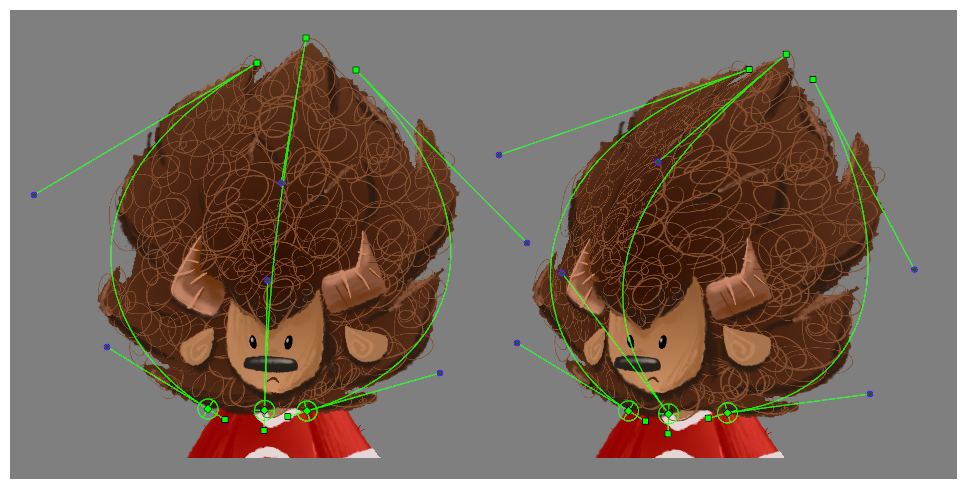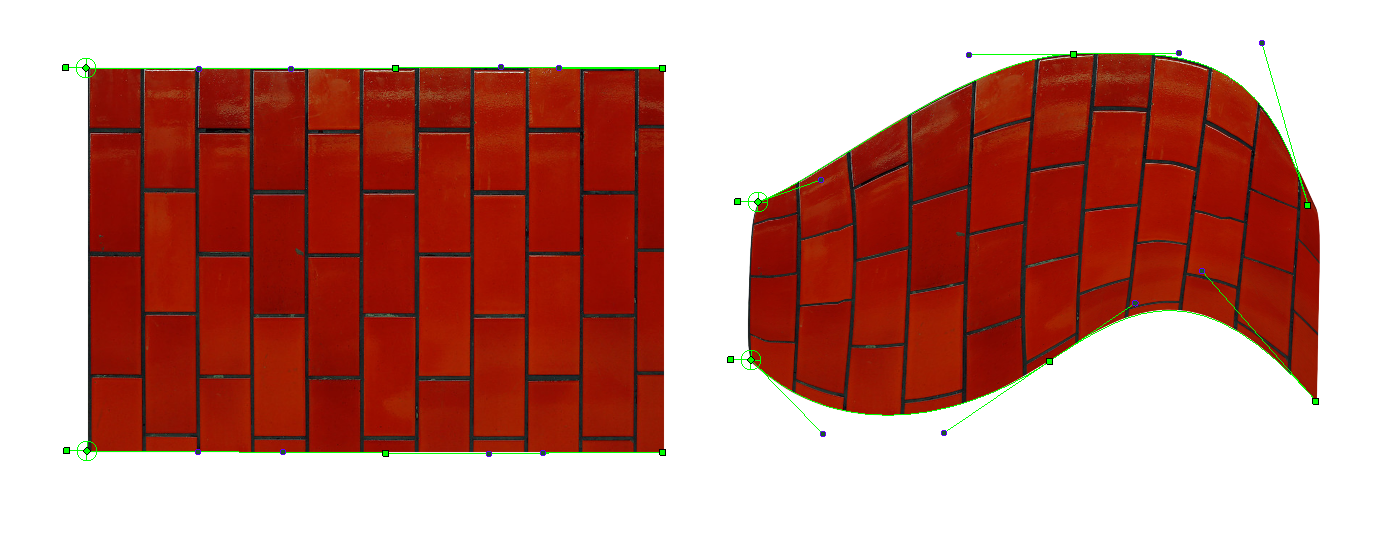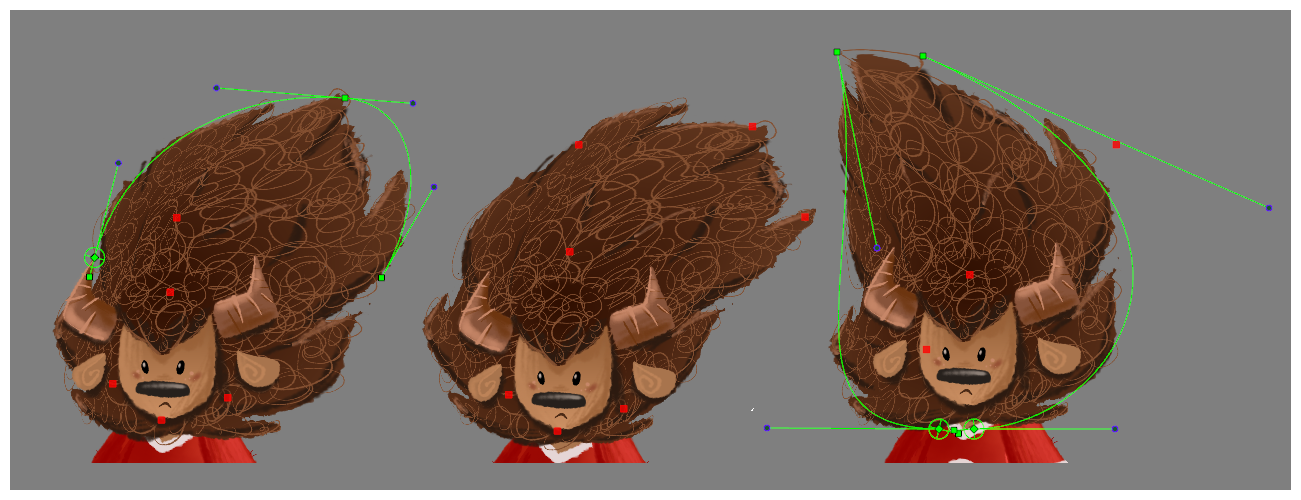The Weighted Deform node is a deformation node that creates a blended deformation from the regions defined by multiple sources. The deformation blends the points in a drawing or image based on the distance to a deformation source and it is used to provide a clean deformed surface. It provides a high quality deformation render and prioritizes quality over speed.
Weighted deformations can be used to define and deform regions. This is useful for designs with a high level of detail. In this case, it helps to create volume by deforming along the axis lines of the hair and blending between the deformation regions.

A Weighted Deform node with two bezier curve deformations -- the Weighted Deform blends between the two curve deformations. Pixels and drawing contours are affected based on their distance from the individual deformation regions attached to the Weighted Deform

.The Weighted Deforms work well on both detail-heavy Harmony drawings as well as Bitmap textures.

The Weighted Deform behaves as a hybrid of the Free Form Deformation and the Envelope deformation. Curves, pegs and other nodes can define the target regions of the deformation and the Weighted Deform node blends between these transformed regions—see About Envelope Deformations and About Free Form Deformations.
It is currently compatible with bones, curve deformations and pegs. All of which can be combined to define deformable regions.

The deformations regions can be mixed and matched to best define the controls of the deformation and provide a deformation that works best for the needs of animation.
Using the Weighted Deform
The Weighted Deform behaves as a composite for existing nodes and creates a blended deformation map from the attached regions. It can be used for both simple and advanced deformations and is best used when the region needs to blend the deformation uniformly from multiple sources.
The way that the Weighted Deform blends the deformation makes it particularly useful for deforming textures, as it is less prone to tearing than other deformation options. It is heavier to process than other deformation options, and should be used as an advanced option when other deformation options are not viable.